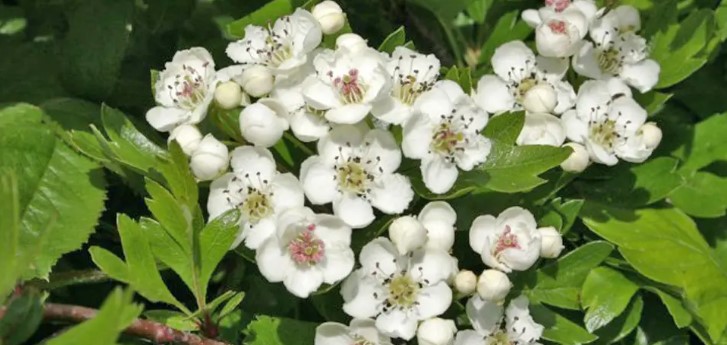Eden Wild Goose Nature
Nature notes from the Focus Magazine May 2020

Hawthorn
The Hawthorn (aka Maythorn, Whitethorn, Quickthorn and Motherdie to name but a few).
One of the most potent symbols of the month of May must be the ever-so-common hawthorn, native to Britain and familiar to us all. Certainly it was abundant where I grew up and for me its flowers have associations of fun and freedom because now the longer days were here and I could go roaming freely on the common which was my playground. The distinctive smell of its creamy white flowers still recaptures those early summer days.
The hawthorn has been part of all our stories for hundreds or even thousands of years. The belief that dates from at least as early as around 400AD, that it was used to make the crown of thorns worn by Jesus at the crucifixion, has led the tree to have some positive connotations. The famous Glastonbury thorn, which sprouted where Joseph of Arimathea thrust his walking pole into the ground, when he was on tour with the Holy Grail here some time back, is a hawthorn. It is said that if you carry a branch of hawthorn you'll be safe from storm and your house protected from evil. The legends date further back into our pre-Christian history as well, as good legends often will. No Mayday dance would be complete without the revellers wearing garlands of May flowers, as it's a symbol of fertility and life. Women would get up early to wash in the dew of the hawthorn to ensure their youthful good looks would last forever. I'd like to think the men did too.
But the same plant that promises protection, fertility and youthfulness has a darker side, with associations of death and danger. Don't ever hang your washing on a hawthorn as the faeries will wreak revenge. And, they say, never have hawthorn in your house as it will bring death with it. In fact the tree brings memories of the plagues of medieval times, as it is said to have absorbed some of the smells of those times. Actually, those old timers may have been on to something as it turns out its strong smell is a result of it containing a chemical called trimethylamine, which apparently is also produced in the early stages of decaying flesh. Hmmm... they never told me that when I got up to my childish fun, back in the day.
One last trivial and yet curiously interesting hawthorn fact, the word 'haw' derives from old English 'haga', so we can be certain it's been a familiar hedging plant for a very, very long time. And may it continue to bring its generous abundance to our hedgerows as a home to more than three hundred insects and many of species of birds, for another thousand years at least.
Philippa Skinner